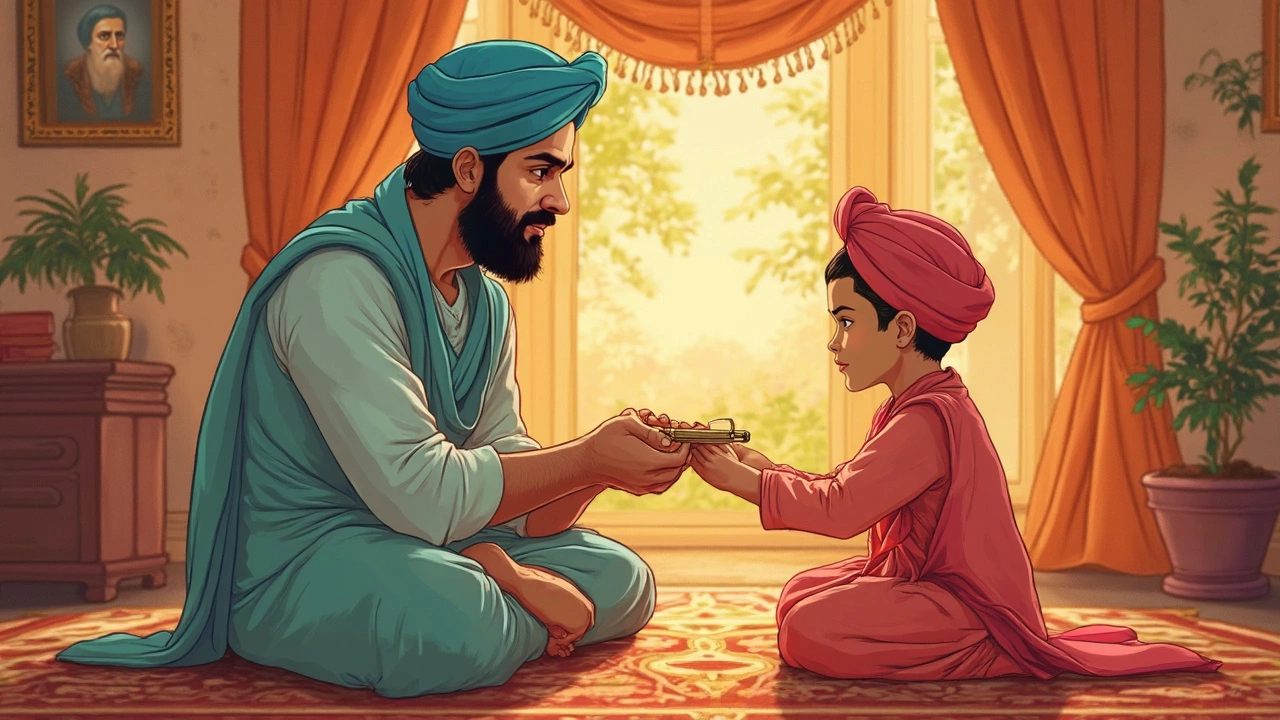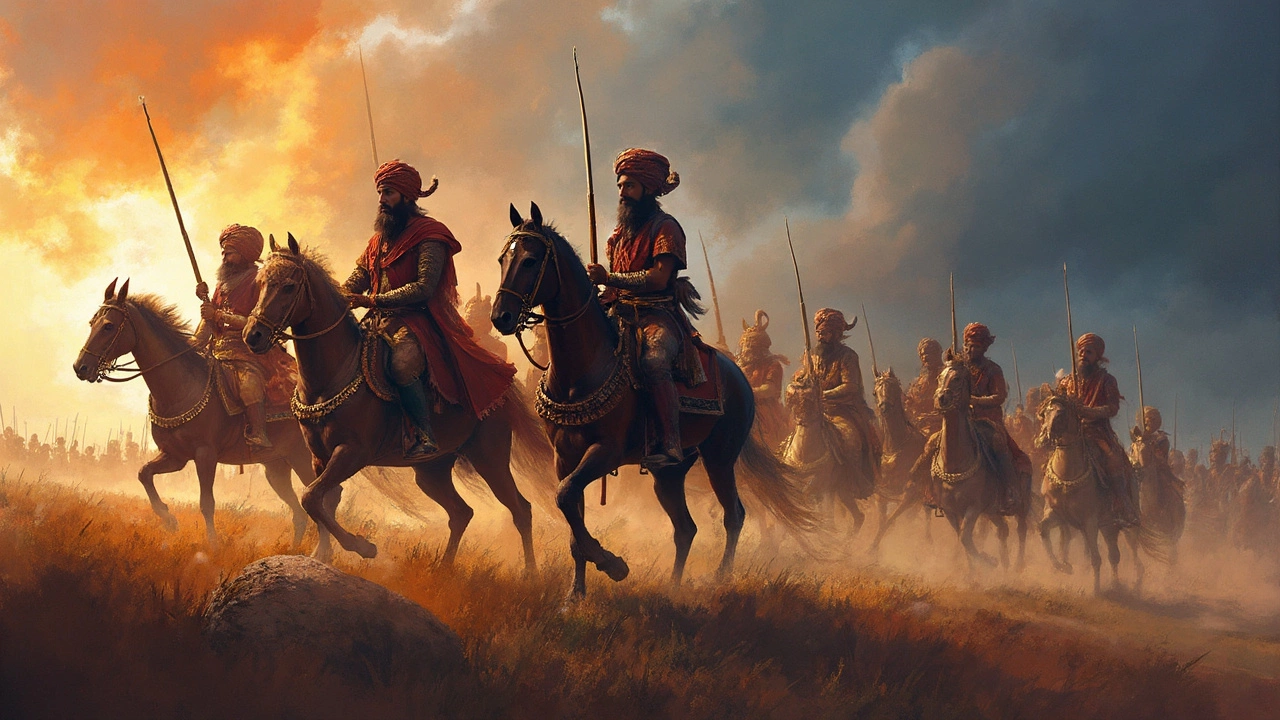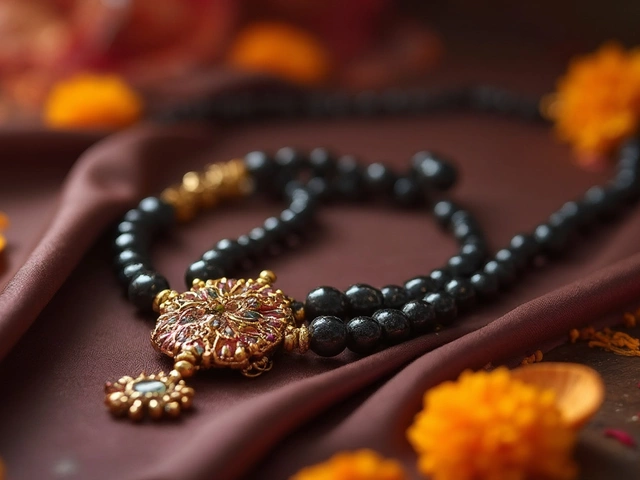The Kirpan is one of the Five Ks, or articles of faith, that baptized Sikhs, known as Khalsa, are expected to wear. But what really is this Kirpan? Is it just a dagger, or does it hold deeper significance? Let's explore.
First up, the Five Ks aren't just random objects; they are deeply connected symbols meant to reflect the spiritual and cultural values of Sikhism. They stand for courage, purity, unity, and a commitment to justice—principles that are core to the Sikh faith.
The Kirpan is not merely a weapon. It's a symbol of a Sikh's duty to stand against tyranny and protect the weak. The short, ceremonial blade serves as a reminder to its bearer of their moral and spiritual responsibilities. Interesting, right?
Historically, the Kirpan traces back to Guru Gobind Singh, the tenth Sikh Guru, who instituted it as a part of the Khalsa identity in 1699. This was more than a mandate; it was a call to stay prepared for self-defense and to uphold righteousness.
In today's world, the Kirpan might raise eyebrows due to security concerns, yet for Sikhs, it's a non-negotiable part of their religious identity. There's a fine line between respecting religious practices and following modern regulations, and navigating this terrain is essential for both Sikhs and the communities they live in.
- Introduction to the Five Ks
- History of the Kirpan
- Cultural Significance of the Kirpan
- The Kirpan in Modern Times
- Respecting the Kirpan
Introduction to the Five Ks
Sikhism is a faith rich with traditions and symbols, among them are the Five Ks. Ever wondered what these Ks are? Well, these are not just letters but essential articles of faith for a Sikh follower, especially those who are baptized into the Khalsa.
The Five Ks include Kanga (a wooden comb), Kara (a steel or iron bracelet), Kesh (uncut hair), Kachera (cotton undergarments), and lastly, the Kirpan. Each has its own unique role and significance in the life of a Sikh.
Let's run through these. Kesh symbolizes spirituality and a respect for God's creation, reflecting the belief in maintaining the natural state as a way of accepting God's will.
The Kanga is not just any comb; it represents cleanliness and order. It's a reminder to keep the mind tidy and thoughts clutter-free, intertwined with the physical aspect of grooming.
Then we have the Kara. It’s a circular steel bracelet symbolizing restraint and gentility. Sikhs wear it as a covenant for perpetual commitment to living a moral and ethical life.
The Kachera isn’t just traditional attire; it's a particular type of undergarment signifying modesty and self-control. It's quite the practical symbol, right?
And finally, the mighty Kirpan: a ceremonial sword. We've already touched upon how it stands for courage and the protection of truth and justice.
So there you have it, the Five Ks aren't random relics; they are meaningful symbols aimed at grounding a Sikh in faith, ethics, and discipline. These articles are worn daily, illustrating a seamless blend of internal spirituality and external action.
History of the Kirpan
The Kirpan has an intriguing history that dates back to the late 17th century. Initiated by Guru Gobind Singh, the tenth guru of the Sikhs, the Kirpan became an essential article of faith in 1699. It was during a time when Sikhs were facing immense oppression and needed a symbol that would embody both their spiritual and martial spirit.
Originally, the Kirpan was designed not just as a weapon but as a tool for defending the oppressed. It's fascinating to see how this small but mighty object carried such significant meaning for the Sikhs. Guru Gobind Singh's call was to create a community—known as the Khalsa—that would always stand ready to protect the weak and fight against injustice.
Over the years, as Sikhism spread, the presence of the Kirpan has varied depending on the region and community. Some Kirpans are larger, resembling traditional swords, while others are smaller and more symbolic. Despite its size, every Kirpan serves as a reminder of the principles of valor and moral duty.
In modern Sikh communities, the Kirpan is still a profound symbol. While its use as a weapon is rare, its role as a religious and cultural insignia remains strong. Sikhs wearing the Kirpan are reminded daily of their duty to uphold righteousness and justice.
Have you ever wondered how Sikhs manage practicing their faith in countries with strict weapon laws? In many places around the world, Sikhs have worked tirelessly to ensure the Kirpan is respected as a religious symbol rather than a weapon. This often involves dialogue and compromise to balance religious freedom with public safety concerns.
Whether exhibited in a religious gathering or quietly worn under clothing, the Kirpan's continued relevance is a testament to its historical roots and the enduring ideals it stands for in Sikhism.

Cultural Significance of the Kirpan
The Kirpan isn't just a piece of jewelry or an accessory. It's a powerful emblem of faith and resilience for Sikhs all over the world. More than just a dagger, the Kirpan serves as a constant reminder of the Sikh duty to uphold righteousness and defend those who face injustice. Imagine carrying a symbol that encompasses both honor and responsibility in your daily life.
Symbol of Justice and Compassion
At its core, the Kirpan embodies the concepts of justice and compassion—two fundamental values in Sikhism. It's not meant for aggression; rather, it's a means for its wearer to live by the principles of fairness and empathy. Historian Karmjit Singh notes,
"The Kirpan is a unique representation of the Sikh spirit—committed to the defense of truth and the protection of human dignity."This perspective is key to understanding why the Kirpan holds such a special place in the hearts of Sikhs.
A Link to History
The introduction of the Kirpan dates back to 1699, by Guru Gobind Singh, the tenth Guru of Sikhism. At a time when Sikhs were facing persecution, the Guru established the Khalsa and presented the Five Ks, including the Kirpan, to solidify the identity of Sikhs and their commitment to justice.
Each Kirpan is unique, with designs varying in style. Some are adorned with intricate patterns or religious insignia, paying homage to its storied past. Though not often spoken about, these unique designs can carry generational stories, making each Kirpan almost a personal heirloom.
Respect in a Modern World
In our ever-connected world, it’s important to understand the Kirpan's relevance beyond the Sikh community. Many countries, including India and Canada, have legal exemptions that allow Sikhs to wear the Kirpan in public places like schools and government buildings, recognizing its presence as more than just traditional garb.
The Kirpan continues to inspire new generations of Sikhs to live by its core values, advocating for justice without resorting to violence. As an ever-present symbol of faith, it encourages meaningful discussions about religious freedom and cultural respect.
The Kirpan in Modern Times
So, how does the Kirpan fit in modern society? This has been quite the conversation, especially when it comes to balancing religious freedom with public safety. It's a challenging space, no lie.
In several countries, particularly in the West, there's been much discussion about whether Kirpans are allowed in public places like schools or airports. Interestingly, places like Canada have made accommodations for Sikhs to carry the Kirpan, understanding its cultural and religious importance. In the UK, law allows Sikhs to carry small ceremonial Kirpans under certain conditions.
However, it isn't always straightforward. There are often size restrictions or requirements that the Kirpan be securely fastened, so it can't be easily drawn. If you're a Sikh working in an environment with specific safety rules, you might have to negotiate a bit with your employer about carrying your Kirpan.
Fun fact: In India, while Sikhs can freely carry Kirpans, different states in the country might have specific rules about where and how it can be worn, particularly in places like courtrooms or during security checks.
The Kirpan is much more than a religious symbol. It’s a reminder for Sikhs to always stand up against oppression and for justice. It’s not just a part of the religion but an integral part of the identity.
For those in communities with Sikhs or when traveling, understanding the significance of the Kirpan can foster greater respect and cooperation. It’s all about finding that balance where religious expressions and community safety happily coexist.

Respecting the Kirpan
You've probably wondered how to approach the topic of the Kirpan respectfully, especially when it's such an important part of Sikh culture. Let's break it down.
Understanding Its Significance
The Kirpan isn't just a symbol; it embodies a Sikh's duty to protect and serve justice. Therefore, respecting the Kirpan means understanding its religious and cultural importance before considering it as just a ceremonial dagger.
Interaction Tips
If you meet someone wearing a Kirpan, remember they carry it as a part of their faith, not as a weapon. It's like how people wear crosses or stars as symbols of their faith. Any questions you have should be asked politely and with genuine curiosity.
- Always address Sikhs with respect when discussing religious symbols.
- Avoid making jokes or insensitive comments about the Kirpan.
- If you see it in a professional setting, understand it's there for cultural reasons and not a violation of any rules.
Legal and Social Considerations
In many countries, including India and Canada, there are legal exemptions that allow baptized Sikhs to wear the Kirpan, even in spaces with strict weapon laws. This makes sense when you think about how integral it is to Sikh identity.
Despite legal recognitions, debates continue around security. Institutions can work with Sikh communities to establish protocols that respect both public safety and religious freedom.
Global perspectives
| Country | Legal Status of Kirpan in Public |
|---|---|
| India | Allowed |
| Canada | Allowed with conditions |
| United States | Varies by state |
Respecting the Kirpan boils down to empathy. It’s about recognizing this small yet powerful dagger as more than just an accessory. For Sikhs, it’s a reminder of their principles and a commitment to stand up for what's right, making it worthy of our respect and understanding.



